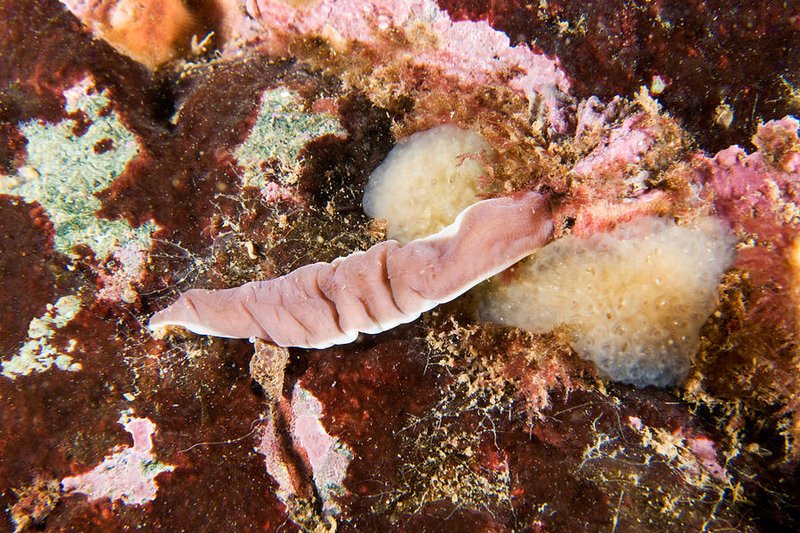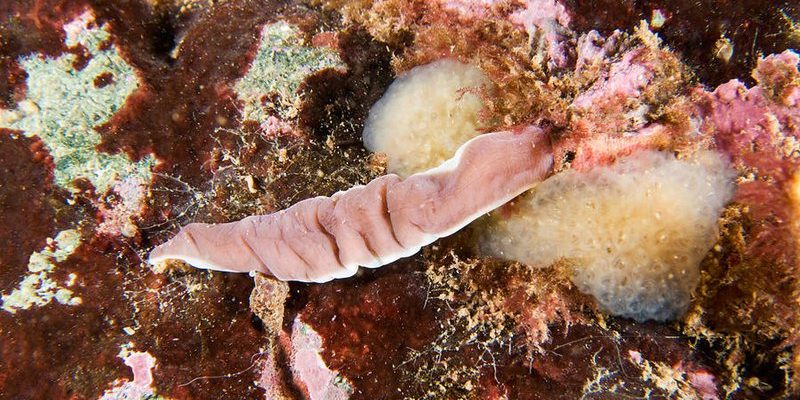
To give you an idea, imagine exploring a dark room without any light. You’d probably rely on your other senses, like touch and hearing, to navigate through the space. Ribbon worms do something similar, and by the end of this article, you’ll have a better understanding of how they operate in their underwater worlds. So, let’s dive into the intriguing world of ribbon worms and uncover how they interact with their environment!
What Are Ribbon Worms?
Ribbon worms, also known as nemerteans, are a unique group of invertebrates that live mostly in marine environments. Their bodies are long, flat, and can stretch to impressive lengths—some species even reach over 30 feet! You might think of them as nature’s ribbons, flowing gracefully through the water. These worms can be found in a variety of habitats, from sandy shores to deep sea floors.
These creatures possess some remarkable features. For example, they have a specialized organ called a proboscis, which they use for hunting prey. This impressive appendage can shoot out to capture small fish or other marine creatures. Honestly, it’s a little like having a superhero power—just without the cape!
Despite their fascinating adaptations, many people wonder how ribbon worms sense the world around them, especially given their lack of eyes. That’s where it gets interesting.
Do Ribbon Worms Have Eyes?
The short answer is no; most ribbon worms do not have true eyes like we do. Instead, they lack the complex structures associated with vision. However, some species have simple light-sensitive cells or structures that can detect changes in light and dark. It’s like having a dimmer switch instead of a full-blown light fixture. This allows ribbon worms to sense their surroundings to some degree, helping them navigate their habitats.
While the absence of traditional eyes might seem like a disadvantage, it’s essential to remember that ribbon worms have developed other sensory mechanisms to thrive. For instance, they rely heavily on their other senses to interpret their environment, allowing them to find food and avoid predators.
You might be wondering how they do this without eyesight. Well, that’s where their sensory organs come into play.
How Do Ribbon Worms Sense Their Environment?
Ribbon worms use a combination of sensory structures to perceive their surroundings. One of the most important is a group of cells that respond to chemicals in the water, known as chemoreceptors. These specialized cells can detect various substances, helping ribbon worms find food and other important cues in their environment.
For example, when a ribbon worm detects the scent of a potential meal or pheromones from other worms, it can follow the chemical trail through the water. It’s like having a built-in GPS that guides them straight to the buffet!
Additionally, ribbon worms have mechanoreceptors, which are sensory cells that respond to pressure and vibrations. This allows them to feel movement in the water, helping them be aware of nearby predators or other disturbances.
Other Sensory Organs in Ribbon Worms
Besides chemoreceptors and mechanoreceptors, ribbon worms possess another fascinating set of sensory organs called statocysts. These small, fluid-filled sacs help the worms determine their orientation and balance in the water. Imagine trying to stand upright in a wave pool without falling over—statocysts help ribbon worms know which way is up, even as they navigate through turbulent waters.
These organs provide vital feedback that allows ribbon worms to coordinate their movements effectively. When combined with their other sensory structures, it creates a well-rounded system that compensates for the absence of true vision.
So, while ribbon worms might not see the world as we do, they have adapted in incredible ways to sense their surroundings and thrive in their watery homes.
Comparison to Other Marine Creatures
If you think about it, ribbon worms are not the only creatures that have adapted to a life without traditional eyesight. Many other marine animals have developed unique ways to navigate their environments. For instance, certain species of fish have evolved to rely heavily on their lateral line system, which detects vibrations and pressure changes in the water, much like how ribbon worms use their mechanoreceptors.
On the other hand, some marine animals, like squids and octopuses, have highly developed eyes that enable them to see in great detail. This highlights the diversity of adaptations in the animal kingdom. Each species has evolved to suit its specific environment and needs.
Understanding how different creatures sense their surroundings helps us appreciate the vastness and complexity of underwater ecosystems. Ribbon worms may not have eyes, but their sensory adaptations make them fascinating components of their habitats.
The Importance of Ribbon Worms in the Ecosystem
While ribbon worms might seem like simple organisms, they play a crucial role in their ecosystems. They contribute to nutrient cycling by breaking down organic materials and serving as prey for various marine animals.
For instance, fish, sea birds, and even some larger invertebrates rely on ribbon worms as a food source. By understanding how these worms interact with their environment through their unique sensory adaptations, we gain insights into the health of marine ecosystems.
Additionally, ribbon worms can serve as bioindicators, meaning their presence or absence can provide important data about the environmental conditions of their habitats. When populations of ribbon worms fluctuate, it can signify changes in water quality, which is vital information for scientists and ecologists.
Wrapping It Up
In summary, ribbon worms are remarkable beings that, despite lacking eyes, possess a suite of fascinating sensory tools that help them thrive in their underwater worlds. They utilize chemoreceptors, mechanoreceptors, and statocysts to navigate, find food, and avoid predators.
While they may not see the world like we do, their adaptations highlight the incredible diversity of life on our planet. Understanding these creatures not only deepens our appreciation for them but also sheds light on the health of our oceans. So, the next time you think about ribbon worms, remember that their unique sensory abilities allow them to journey through their environments in their own extraordinary way.

